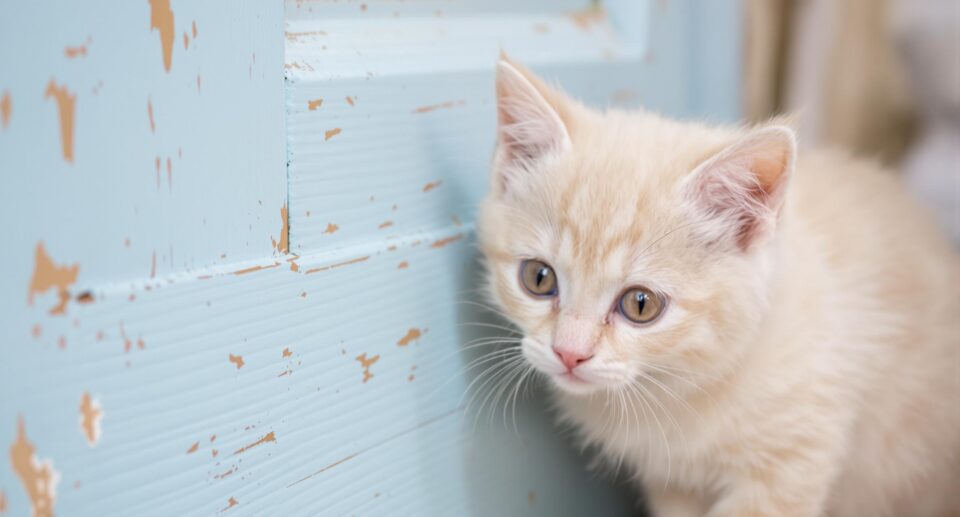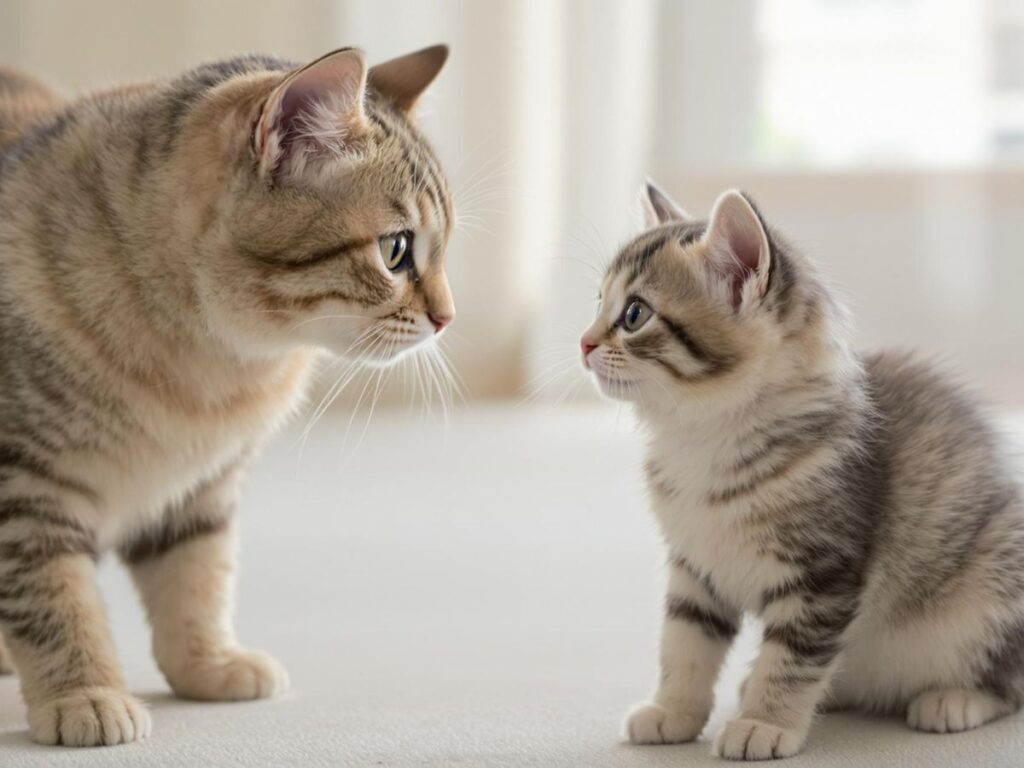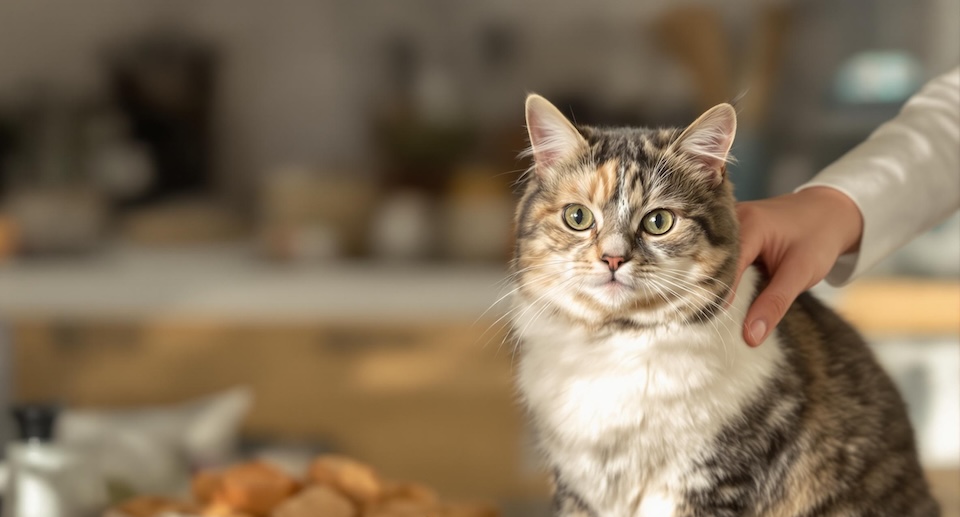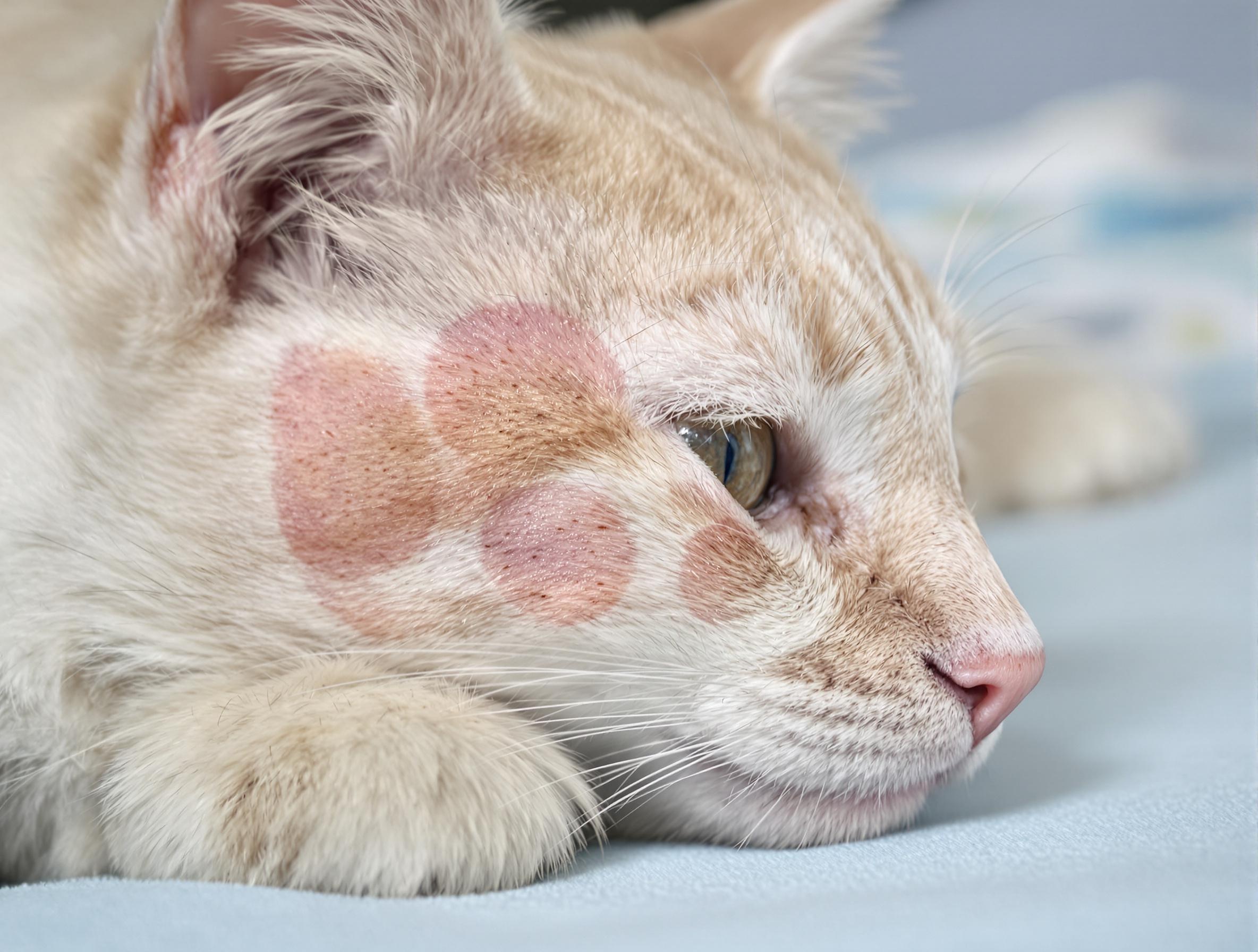How to Introduce a Kitten to an Adult Cat Without Stress

Key takeaways:
- Slow, step-by-step introductions help reduce territorial stress and create safer interactions between cats.
- Starting with scent swapping and visual contact allows both cats to build familiarity at their own pace.
- Watch for signs of stress, take breaks as needed, and be patient—positive relationships take time to develop.
Bringing a kitten into a home with an adult cat can feel exciting and a little nerve-wracking. While it’s natural to hope for instant friendship, most cats need time and structure to adjust to a new companion. A rushed introduction often leads to tension, but a patient, step-by-step approach can set the stage for a peaceful bond.
At PetHealthMD, we know that successful introductions start with understanding how cats communicate and respond to change. This guide will walk you through each phase, from setting up separate spaces to managing early interactions. With the right strategy, you can help both cats feel safe and confident as they learn to share their home. If at any point during the introduction you find yourself concerned, be sure to consult your veterinarian for further guidance.
Why Slow Introductions Matter
Cats are territorial by nature, and sudden changes in their environment—especially involving another animal—can lead to stress, fear, or defensive behavior. Unlike dogs, most cats don’t warm up quickly to new companions. If they feel threatened or overwhelmed, they may lash out or retreat, and that tension can linger.
Introducing a kitten too quickly can cause your adult cat to feel like their home has been invaded. That early stress might lead to hissing, swatting, or long-term avoidance. A gradual approach helps both cats feel more secure and reduces the chance of aggressive or fearful responses.
Taking it slow also builds trust. By giving each cat space to adjust at their own pace, you’re more likely to lay the foundation for a peaceful relationship. What may start as cautious curiosity can grow into comfort and—eventually—companionship.
Prepare a Separate Space for the Kitten
Before any introductions happen, your new kitten should have their own dedicated space. A quiet room stocked with food, water, a litter box, toys, and a soft bed helps them settle in safely without immediate pressure from your resident cat.
This early setup helps because:
- It keeps the kitten safe and contained while they adjust to their new surroundings.
- It prevents overstimulation during their first days in a new environment.
- It gives your adult cat time to adjust to the idea of another animal in the home.
It also supports a calmer introduction process by:
- Allowing your adult cat to detect the kitten’s scent through the door without face-to-face interaction.
- Giving both cats a sense of control over how and when they engage.
- Reducing the likelihood of a negative first impression, which can slow long-term progress.
Separating the two early on creates the structure needed for a smoother transition. Once both cats are familiar with each other’s presence and scent, you can move forward with the next step: scent swapping.
If you need to stock up on essentials like litter boxes, scratching posts, and kitten toys, explore the Cat Supplies section at 1-800-PetMeds.
Begin Scent Swapping Before They Meet
Letting cats get used to each other’s scent before they meet in person is one of the safest ways to begin introductions. It gives each cat a chance to learn about the other at their own pace without the pressure of a face-to-face encounter, building trust while preventing early tension.
Benefits of scent-first introductions:
- Prepares both cats for a new companion in a non-threatening way.
- Allows you to observe reactions without risking a confrontation.
How to do it successfully:
- Swap items like blankets or toys that carry each cat’s scent.
- Rub a towel on one cat and place it in the other cat’s resting area.
- Create shared scent moments, like feeding on opposite sides of a closed door.
When your cats act calm and curious around the new scent, you’re one step closer to a smooth introduction. From there, you can safely move on to visual interaction through a barrier.

Allow Visual Introductions Through a Barrier
With scent swapping complete, it’s time to let your cats lay eyes on each other—safely. A physical barrier gives you control over the interaction while helping both cats learn that each other’s presence isn’t something to fear.
Why it works:
- Limits physical contact while still letting them observe and adjust.
- Builds confidence for both cats through repeated, calm exposure.
- Helps desensitize them to each other’s movement and presence.
How to do it right:
- Use a visual barrier like a mesh gate, glass door, or slightly open door.
- Watch for stress cues like flattened ears, puffed tails, or growling.
- Redirect focus using interactive toys or treats.
These first glimpses set the tone for future face-to-face meetings. Keeping things light and rewarding during this stage helps reduce anxiety and encourages curiosity. For helpful enrichment tools, visit Cat Toys and Play on PetMeds.com.
Monitor Short Face-to-Face Meetings
Once your cats have had several calm visual sessions, you can start introducing them in the same space—but only for brief, supervised interactions. These early meetings set the tone for their future relationship, so keeping them calm and structured is key.
Why it’s important to supervise:
- Allows you to redirect tension before it escalates.
- Prevents negative first impressions that could slow progress.
How to manage early meetings:
- Keep sessions short—5 to 10 minutes at most to start.
- Use toys or treats to create positive distractions.
- Stay calm and neutral so your energy doesn’t influence the cats.
- Separate the cats immediately if you see swatting, hissing, or chasing.
If the first few meetings go smoothly, you can gradually increase the time they spend together. Don’t rush—slow, positive interactions lead to long-term trust.
Watch for Stress Signals and Take Breaks as Needed
Even with steady progress, it’s common for cats to show signs of stress or overstimulation. Recognizing those early warning signs can prevent catfights and keep the process positive. Being flexible with your timeline makes all the difference.
Common signals that indicate it’s time to pause include:
- Flattened ears or a tucked tail
- Dilated pupils or intense staring
- Sudden silence or withdrawal after active interaction
- Quick tail flicking or puffed fur
- Jumping onto high furniture to get away
- Unusual bathroom accidents following a session
- Refusing food or hiding after the interaction
Take stress signals seriously and respond with calm redirection or a full break if needed. Giving each cat space helps maintain emotional safety. With time, those signals should become less frequent as comfort grows.
If you notice ongoing anxiety or aggression, products from the Cat Anxiety & Calming category may help reduce stress during this transition.
Patience Pays Off
Introducing a kitten to an adult cat isn’t something to rush. With a structured plan, most cats can learn to coexist and even play and cuddle. It’s all about reading the room, respecting their pace, and adjusting when needed.
At PetHealthMD, we offer step-by-step guidance to help you confidently manage changes in your pet’s environment. From first introductions to behavior management, our resources are here to support a smoother transition. With a bit of time and effort, your home can be a safe, shared space for your pets.
Shop Cat Supplies at 1-800-PetMeds to find essentials for a calm, comfortable introduction experience.





